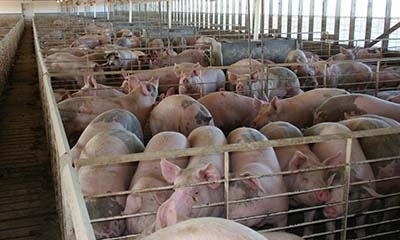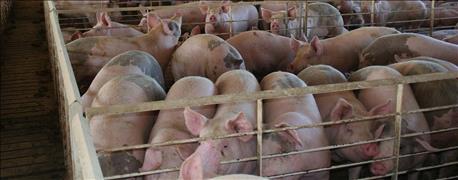September 16, 2016

After a dry July, many areas in the Corn Belt experienced a wet and particularly humid August, which may put it at greater risk for mold.

When conditions may warrant a concern for mycotoxins, it’s better to be proactive and test the corn to gain a better understanding of the level of mycotoxins. (Photo: darcy maulsby/Thinkstock)
One of the most commonly occurring molds in corn is Fusarium, which produces several mycotoxins. High levels of mycotoxins are associated with deleterious effects to swine production. These effects range from poor growth and feed conversion to dramatic or complete feed refusal. Moreover, depending on the type of mycotoxin present in the corn, immune system suppression, liver, or lung challenges may arise. When consumed, mycotoxins activate the immune system, and the more mycotoxins present the larger the immune response. Even moderate levels of mycotoxins in corn can affect pigs, causing them to appear sickly and have a reduction in feed intake. Pigs may also experience labored breathing due to the mycotoxins.
Fusarium contaminated corn is white or salmon colored and white streaking or a “starburst” appearance may be noticeable. Many hybrid corn varieties are resistant to mold, but Fusarium is rather ubiquitous so the potential for greater mold growth is a risk. To help reduce mold growth and the mycotoxins they produce, dry corn to 13% moisture before storage. Many mills will sample corn for mycotoxins, but these tests tend to be performed quickly and may not be accurate.
When conditions may warrant a concern for mycotoxins, it’s better to be proactive and test the corn to gain a better understanding of the level of mycotoxins that may be present. Hubbard Feeds has access to sophisticated diagnostic services through Alltech’s 37+® Program. The analytic methods in the 37+ program help identify more than 30 different mycotoxins quantitatively, and more than 50 others qualitatively in a short period of time. Patterns of contamination are investigated in feed mixes to better capture mycotoxin profiles and the associated risks for the pigs consuming the contaminated corn. Continued research by Alltech has shown that a combination of mycotoxins, even at low levels, can have an additive negative effect on the pig. The benefit of the 37+ Program is having the ability to analyze for a wide variety of mycotoxins to get a more complete picture of the corn and feed quality.
Once the mycotoxin profile of the affected corn or feed can be determined, strategies to mitigate the negative effects can be put in place. One option to consider is Integral A+, a hydrolyzed yeast product from Alltech. In pigs fed diets containing mycotoxin contaminated corn, Integral A+ has been shown to improve gains and reduce the negative effects.
Source: Hubbard Feeds
You May Also Like




